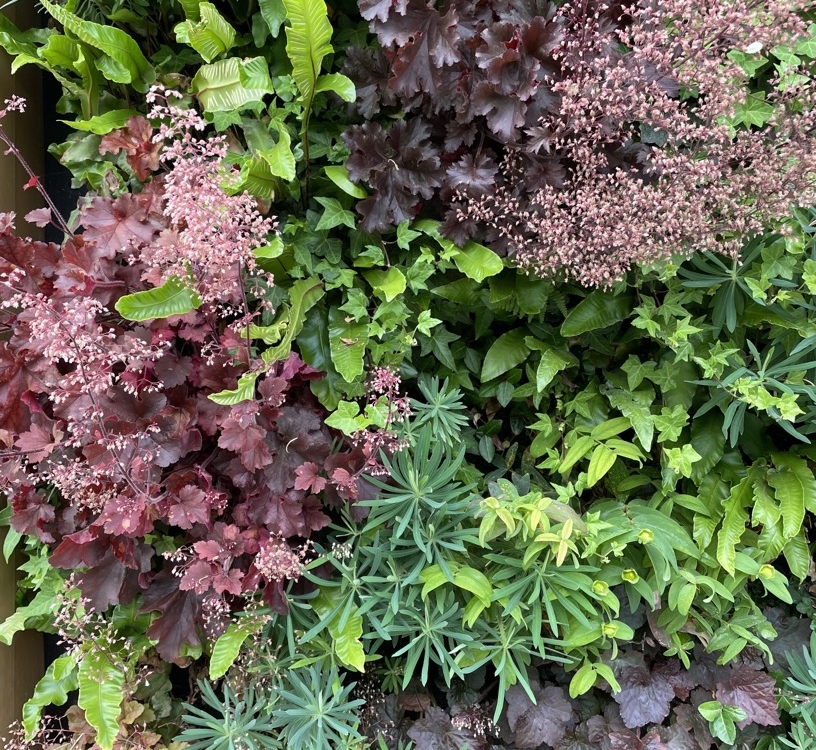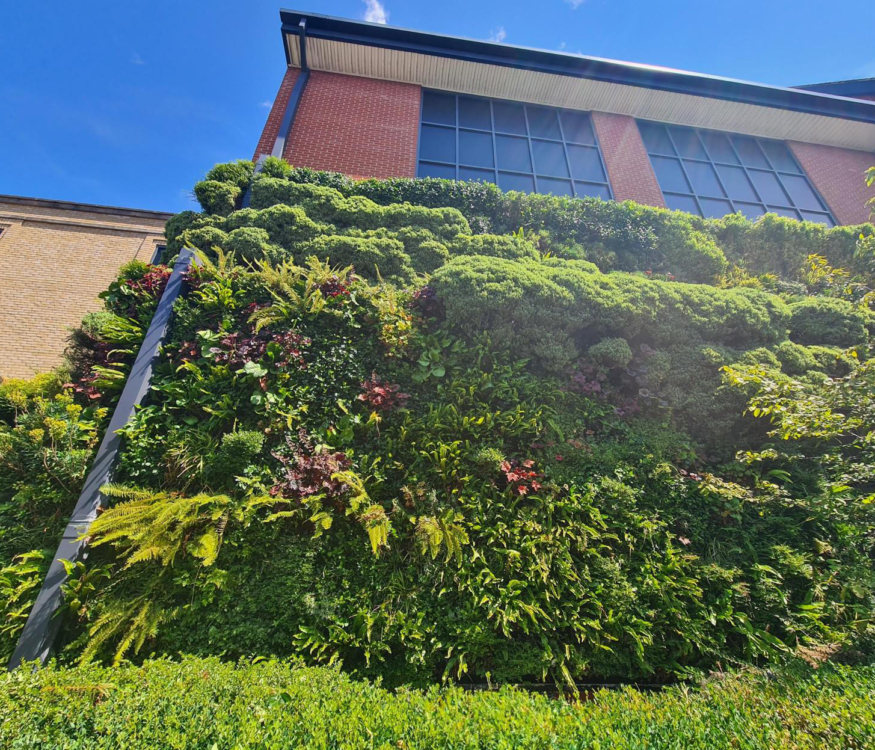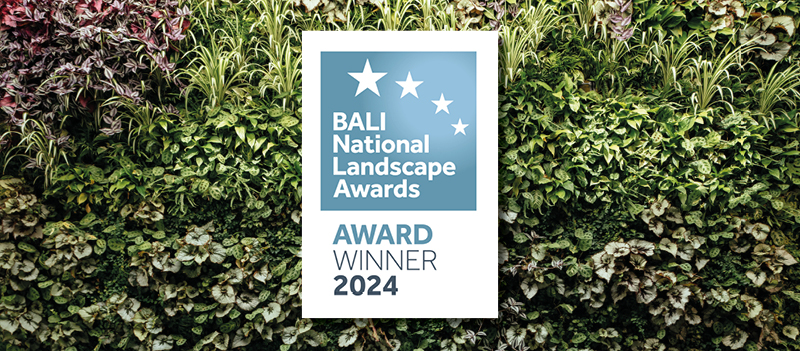A new study conducted by the Royal Horticultural Society (RHS) investigated the impact of different green façade types on invertebrate populations. The study, conducted at the at the state-of-the-art RHS Hilltop science centre in Wisley gardens, is the first to show the benefits of green walls for invertebrates.
The study involved constructing mini-buildings, some with bare walls and others adorned with different combinations of three climber species: common ivy, Virginia creeper, and climbing hydrangea. Over two growing seasons, these green facades were observed and sampled for invertebrates.
Key findings:
- Vegetation Depth and Cover Matter: Walls with greater vegetation depth and cover were found to support increased invertebrate abundance. This underscores the importance of lush and varied greenery in creating thriving ecosystems.
- Common Ivy Takes the Lead: Common ivy, known for its vigor and densely-leaved nature, emerged as a star performer. Walls adorned with common ivy attracted more invertebrates compared to those with other climbers, showcasing the importance of plant selection in green wall design.
- Strength in Diversity: Combining different forms of common ivy resulted in an even higher invertebrate abundance. This highlights the role diversity plays in creating robust and resilient urban ecosystems.
Andrew Salisbury, Head of Plant Health at RHS, aptly summarizes the significance of the findings: “Greening walls with climbers and other plants creates places for a wide range of invertebrates, including beetles and a variety of predatory invertebrates, to live and to feed. In urban areas where many people have little space for a garden, they can bring huge benefits—not only supporting invertebrates but providing shelter and food for birds and other wildlife too.”

One and Five Bank Street, Canary Wharf, BioPanel Living Wall, Biotecture
Creating Biodiverse Living Walls:
At Biotecture, we take pride in contributing to the transformation of urban landscapes into vibrant ecosystems. Our living walls go beyond enhancing the visual appeal of buildings; they are crucial components of a sustainable and biodiverse future. Here are a few of things we do to maximise biodiversity in our living walls:
Diverse Plant Selection:
A diverse selection of plants is crucial for maximizing biodiversity in a living wall. Incorporating various plant species, both native and well-adapted to the local environment, promotes a rich ecosystem. Choosing plants with different heights, textures, and blooming periods ensures a habitat that attracts a wide range of insects and other small creatures.
Flowering Plants for Pollinators:
To support pollinators, it’s essential to include flowering plants that provide nectar and pollen. We include plants with staggered blooming times, guaranteeing a continuous food source throughout the seasons.
Vertical Plant Layering
By creating distinct layers of vegetation within the living wall, mimicking natural ecosystems, there are more opportunities for various species to find suitable niches.
Integration of Habitat Boxes
Biotecture also incorporate habitat boxes to offer shelter and nesting sites for insects.
To find out more about how living walls can help meet your biodiversity targets please get in touch:
+44 (0)1243 572118

Living wall at Regent’s Place London




